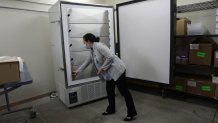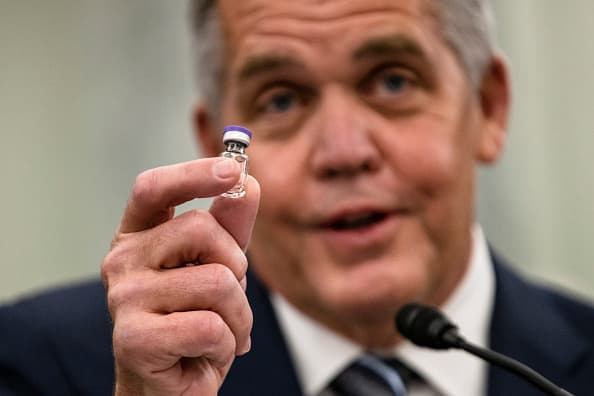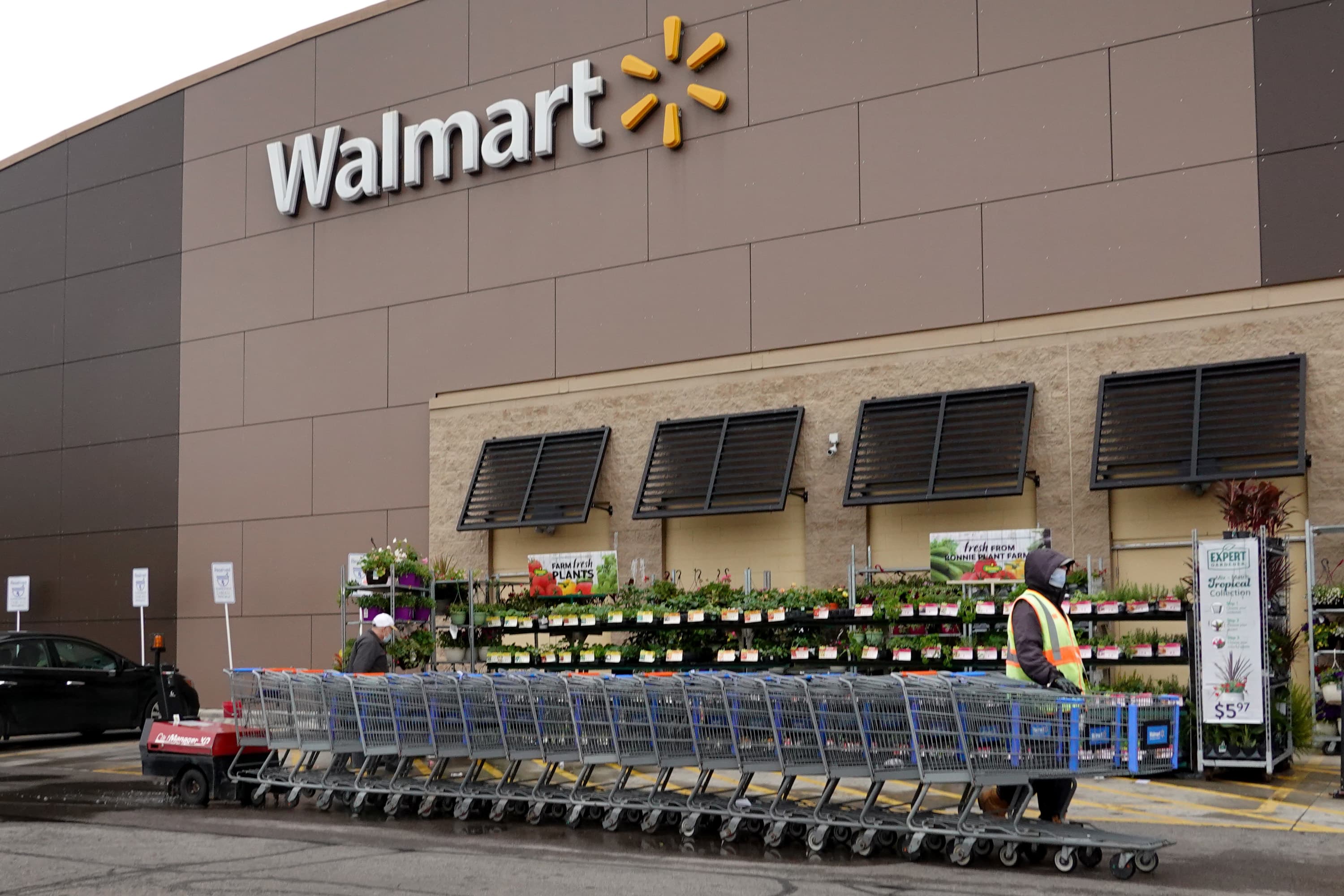What to Know
- COVID-19 vaccines will be made available to everyone in the state aged 50 and older beginning April 1.
- In mid-January, California announced it is immediately allowing residents 65 and older to get vaccines.
- It will likely be well into 2021 until vaccines are available to the general public.
The first allocations of COVID-19 vaccine arrived in Southern California Dec. 13, marking a major milestone in the nation's largest vaccination effort.
Here's what happens next, keys to vaccine distribution and other frequently asked questions.
Note: This page will be updated as more details about vaccine distribution become available.
Plan Your Vaccine: How and where to get vaccinated.
How do I get in line for a vaccine?
The best place to start is you county health department. They have information about when you can get your vaccine, how to register and notifications about temporary vaccination site closures.
- See more information from LA County here.
- For information from the city of LA, click here.
- To learn about Orange County vaccine schedule, go here.
- To learn about Riverside County’s vaccine clinics, go here.
- To learn about San Bernardino County’s vaccine schedule, go here.
- To learn about Ventura County’s vaccine schedule, go here.
- The state of California also has a vaccinations sign-up page. That's here.
- And, you can use our interactive Plan Your Vaccine tool to find a location anywhere in the U.S.
Who will get the vaccine first?
In California, priority went to healthcare workers on the pandemic's front lines and long-term care residents. Priority phases are developed by the Centers for Disease Control and Prevention and with guidance from the California Department of Public Health.
Health care workers are deemed a top priority in receiving vaccinations in what is known as “Phase 1a'' of the CDC-determined distribution plan. Los Angeles County will distribute the initial wave of doses to acute-care hospitals. Vaccines for long-term care staff and residents will be distributed via a federal contract with CVS and Walgreens.
Beginning March 1 in Los Angeles County, COVID-19 vaccine doses were offered to essential workers in education and child care, food and agriculture, and law enforcement and emergency services.
What about seniors?
On Jan. 13, California said it is immediately allowing residents 65 and older to get scarce coronavirus vaccines. The move puts seniors in line before emergency workers, teachers, childcare providers and food and agriculture workers even as counties complain they already don’t have enough doses to go around.
LA County did not immediately open vaccinations to that group, but on Jan 18 Los Angeles County Board of Supervisors Chair Hilda Solis signed an executive order making COVID-19 vaccines available to residents aged 65 and older. That order was to go into effect Jan. 21.
When will vaccines be available to the general public?
COVID-19 vaccines will be made available to everyone in the state aged 50 and older beginning April 1, then to everyone aged 16 and up on April 15, Gov. Gavin Newsom announced, saying vaccine supply is expected to quickly skyrocket.
Where will vaccines be distributed?
Schools, libraries, current testing sites and clinics are all candidates, along with super-sites. Pharmacies like CVS and Walgreens also plan to distribute the vaccine. CVS says it will begin delivering vaccines at 100 California stores by mid-February. Vaccination super sites capable of dispensing thousands of shots per day have been established at Disneyland, Dodger Stadium and other locations, possibly including fairgrounds.
How many shots are needed?
All but one vaccine -- Johnson & Johnson's -- require two shots. Pfizer’s second shot is three weeks later, and Moderna’s is four weeks after the first. The doses are administered days apart to achieve the effectiveness in clinical trials. The vaccines work in different ways, but they all assist the immune system in fighting the virus. It usually takes a few weeks after the second dose for a vaccine to provide full protection.
How long will widespread vaccination take?
It will likely take months to immunize everyone who wants to be vaccinated in the United States. The head of President Trump's Operation Warp Speed program has said the U.S. should be able to distribute enough doses to immunize 100 million Americans by the end of February -- or nearly a third of the U.S. population. He has said the entire U.S. population -- those seeking a vaccine -- could be vaccinated by June.
Can I get COVID-19 from the COVID-19 vaccine?
No. A vaccine simply teaches your body's immune system how to fight the virus that causes COVID-19. Here's a close look at how the Pfizer BioNTech vaccine works.
How will the vaccine be shipped?
FedEx and UPS officials say their shipping networks are ready, even as they already face a busy holiday season. Vaccines will be loaded and unloaded before other cargo, and flights carrying vaccines will receive priority from the Federal Aviation Administration, the officials said. Vaccine packages will have special labels and devices to monitor location and temperature -- a key factor in vaccine shipping and storage. US Marshals will play a role in protecting the vaccine shipments.
What about side effects?
Most people don't have serious side effects from vaccines. Severe reactions are extremely rare, according to the Department of Health and Human Services. As for Pfizer's and Moderna's vaccines only 10% to 15% of volunteers reported side effects that were "significantly noticeable." Participants told CNBC in September that they experienced high fever, body aches, headaches, exhaustion and other symptoms. While uncomfortable, the participants said they often went away after a day and sooner.
The FDA said there is currently insufficient data to make conclusions about the safety of the vaccine in children under age 16, pregnant women and people with compromised immune systems.
If you do experience side effects, report it here.
What about allergic reactions?
Vaccines can sometimes cause allergic reactions, but they're rare, usually brief and don't come as a surprise. Here's an explainer.
Once the vaccine arrives in California, where is it stored?
Proper storage is one of the keys to vaccine distribution. They must be stored at extremely low temperatures. Pfizer's vaccine requires storage at around minus 95 degrees Fahrenheit. Cedars-Sinai Medical Center, UCLA and UC San Francisco Medical Center are some of the locations with that capability.

What if I've already had COVID-19?
It's still a good idea to get vaccinated. The FDA said patients may still be at risk of reinfection and could benefit from the vaccine. One problem is that researchers are still trying to determine how long antibody response lasts.
What about children and pregnant women?
Pfizer began enrolling children between 12 and 17 for trial in the fall. Moderna's trials for children are just starting. Moderna is conducting a study of its COVID-19 vaccine in children younger than 12 — one that will include babies as young as 6 months.
Pregnant woman have been excluded from large-scale clinical trials. Dr. Christopher Zahn, the vice president of practice activities of the American College of Obstetricians and Gynecologists, told NBC News that pregnant women should consult their doctors and make a decision based on the available data and their “individual risk factors and the potential benefits.”
Does a vaccine replace masks?
No. What kind of effect the vaccine will have in real-life conditions outside of clinical trials remains to be seen. So, for now, the strategies that have worked to limit the virus' spread -- masks, distancing, hand-washing -- still apply.
"It's only still a piece of the puzzle," said NBCLA contributor nurse Alice Benjamin.
Can my employer require me to get vaccinated?
About four in 10 Americans say they would "definitely" or "probably" not get a vaccine, according to a Pew Research Center survey. Some companies may consider compulsory vaccinations, but there are some exceptions under the law. So here's what to know.
What if the virus mutates?
Not long after China collected samples of the virus and published its genetic code online, allowing researchers to start work on a vaccine, scientists noticed a more contagious strain was spreading in Europe. In a survival-of-the-fittest scenario, the virus was adapting and changing. Here's how scientists monitor those changes and what it means for vaccines.
California COVID-19 Vaccinations
The map tracks the number of doses administered by a recipient's county of residence according to the The California Department of Public Health.
Source: The statewide totals for doses administered reflect Centers for Disease Control and Prevention data. Otherwise we used data from the California Department of Public Health.
Amy O’Kruk/NBC



